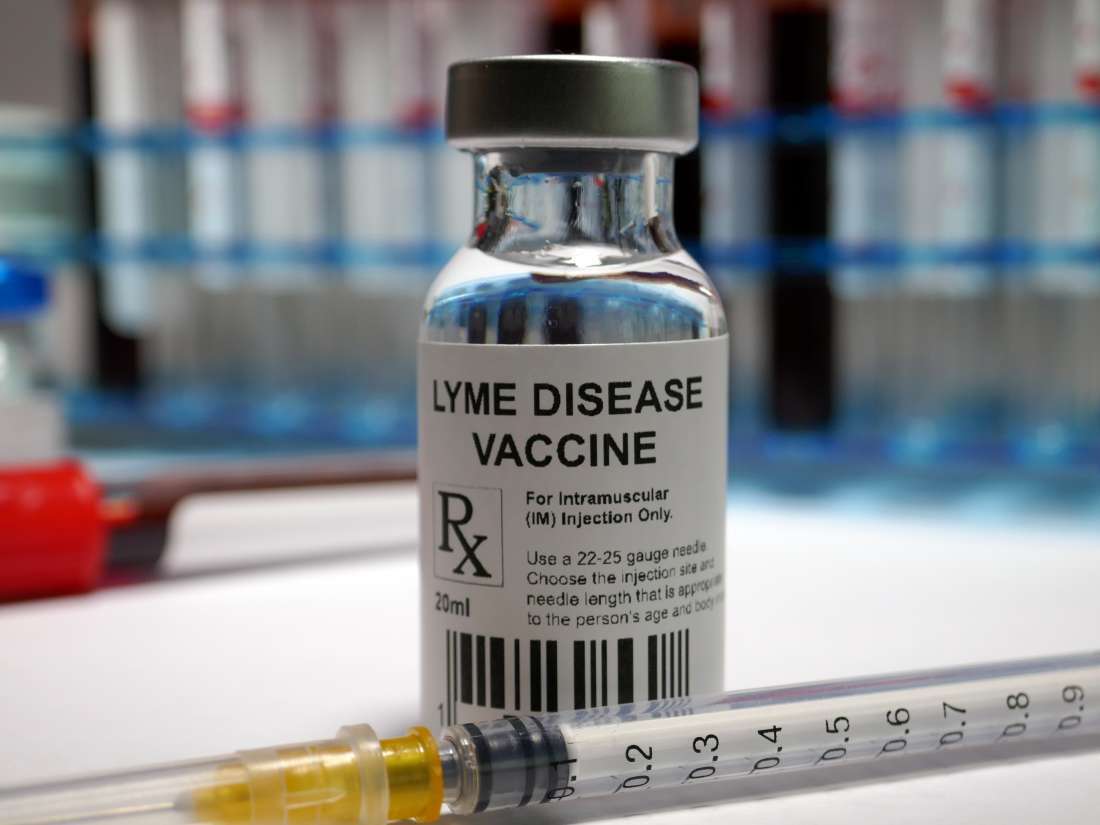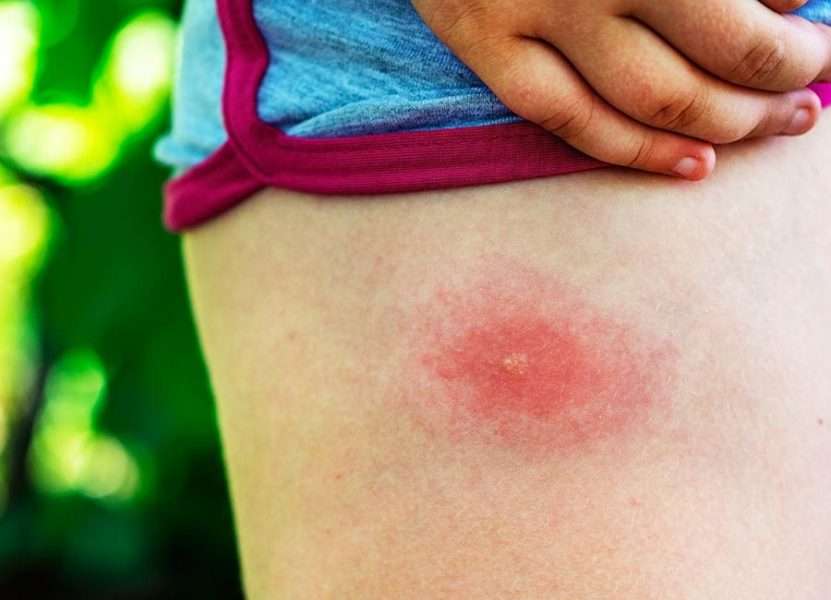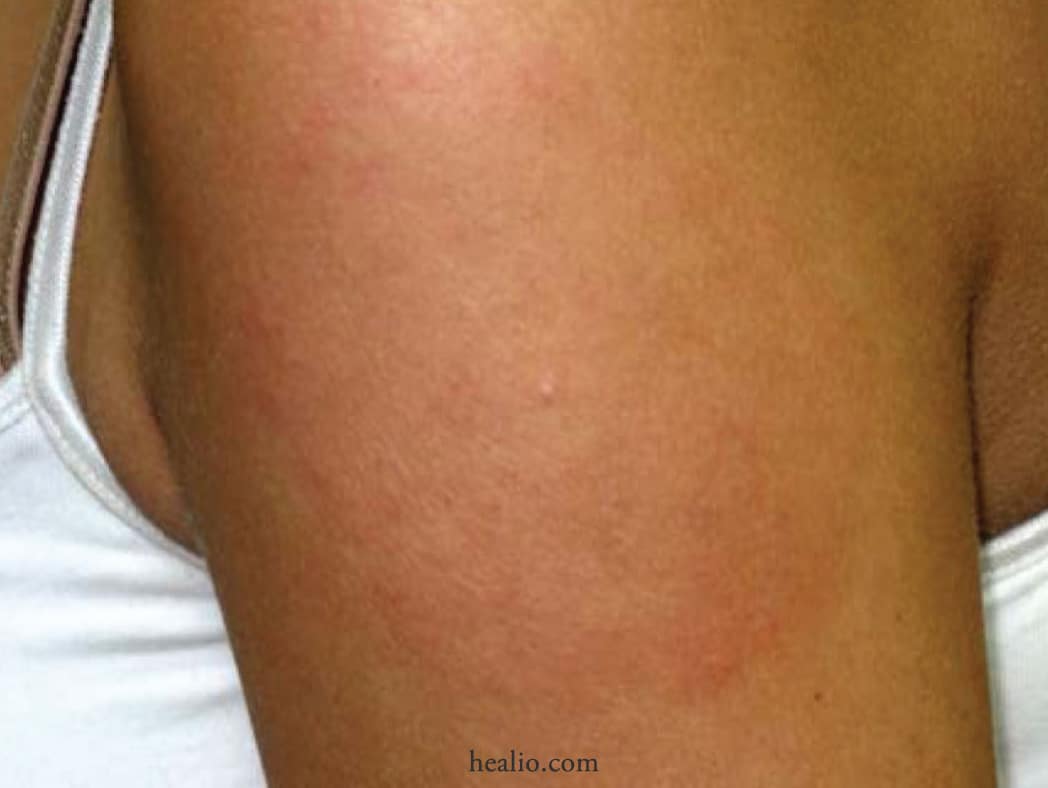What Are The Signs & Symptoms Of Lyme Disease
Lyme disease can affect different body systems, such as the nervous system, joints, skin, and heart. The symptoms of Lyme disease are often described as happening in three stages. Not everyone with Lyme has all of these, though:
The rash sometimes has a “bull’s-eye” appearance, with a central red spot surrounded by clear skin that is ringed by an expanding red rash. It also can appear as an growing ring of solid redness. It’s usually flat and painless, but sometimes can be warm to the touch, itchy, scaly, burning, or prickling. The rash may look and feel very different from one person to the next. It can be harder to see on people with darker skin tones, where it can look like a bruise. It gets bigger for a few days to weeks, then goes away on its own. A person also may have flu-like symptoms such as fever, tiredness, headache, and muscle aches.
Lyme Disease Signs And Symptoms
Most symptoms of Lyme disease in humans usually appear between three and 30 days after a bite from an infected blacklegged tick.
You should contact your local public health unit or speak to a health care professional right away if you have been somewhere that ticks might live and experience any of the following symptoms:
- a bulls-eye rash (a red patch on the skin that is usually round or oval and more than 5 cm that spreads outwards and is getting bigger
- a bruise-like rash
- another type of unusual rash
- muscle aches and joint pains
- swollen lymph nodes
- spasms, numbness or tingling
- facial paralysis
If not treated, Lyme disease can make you feel tired and weak and, if it gets really bad, it can even harm your heart, nerves, liver and joints. Symptoms from untreated Lyme disease can last years and include recurring arthritis and neurological problems, numbness, paralysis and, in very rare cases, death.
Stage 2 And 3 Lyme Rashes
During stages 2 and 3 of Lyme disease, rashes may also be present. During stage 2, the rash will take roughly one to six months to appear. It will be markedly different from stage 1 and appear as small oval-shaped rashes, typically appearing on various parts of the body such as the face, legs, and arms. The center of a stage 2 Lyme disease rash may also be darker in the center or appear bluish with a clear center. In contrast with stage 1 rashes, stage 2 skin lesions are not likely to grow as the disease progresses.
Stage 3 Lyme disease does not often encompass rashes however, if skin changes do occur, they will typically appear on the hands and feet. Symptoms of skin changes in stage 3 Lyme disease can include pain, redness, and swelling. If the infection is severe, stage 3 will present with some skin symptoms such as:
- Hardening, thinning, or tearing of the skin
- Hair loss around the affected area
- Sweat gland loss
In very rare cases, lymphoma tumors may form on the skin.
Read Also: Can Stage 3 Lyme Disease Be Cured
Do All Ticks Transmit Lyme Disease
No. In the northeastern and north-central U.S., the black-legged tick carries Lyme disease. In the Pacific coastal U.S., the western black-legged tick spreads the disease.
Other major tick species in the U.S., like the lone star tick and the dog tick, do NOT transmit the Lyme disease bacterium. But beware: All 50 states have reported Lyme disease, as well as Canada, Europe, Asia, Australia, and South America.
Stage : Small Oval Rashes Or A Reddish Lump

When a tick that causes Lyme disease bites you, it infects you with bacteria. Without treatment, the bacteria can spread to other areas of your body. Stage 2 begins when the bacteria spread to other parts of your body.
During this stage, you may see small, oval rashes on your skin. Some people develop a bluish-red lump.
Where you see these signs: Because the infection has spread, small rashes can appear anywhere on your skin, except for your palms and soles. Most rashes appear on the arms, legs, and face.
Some people develop a lump, which your doctor may refer to as borrelial lymphocytoma. In children, this lump tends to appear on an earlobe. Adults often see a raised growth form around a nipple.
Borrelial lymphocytoma on a childs ear
This can appear in stage 2 of Lyme disease.
What you may see on your skin: The rashes that appear during stage 2 differ from the rash that can appear in stage 1. In stage 2, the rashes stay the same size rather than grow larger.
When the rashes, lump, and symptoms begin: About 30 to 45 days after the tick bites you, you may notice rashes or a lump. These can also take longer to appear, sometimes six months or more.
Some people develop symptoms, which make them feel ill, including:
-
Shortness of breath and dizzy spells
-
Bells palsy, which causes one half of the face to droop
-
Heart problems, such as chest pains or an irregular heartbeat
Recommended Reading: Can You Have Lyme And Not Know It
Does Lyme Always Have Bullseye
The bullseye rash is caused by the Lyme bacteria disseminating in the skin. It is extremely unlikely to have a bullseye rash after being in a tick infested area and not develop Lyme disease. Most, if not all doctors will agree to that. Adult ticks rarely if ever cause a bullseye rash.
Read Also: Lyme Disease Symptoms And Treatment In Humans
Diagnoses: Shingles Cellulitis Necrotizing Fasciitis
Doctors initially suspected shingles but treatment with valacyclovir, an antiviral medication, did not improve the skin rash or symptoms. The blisters increased in size and showed purple discoloration, the authors wrote.
The doctors then diagnosed her with cellulitis, a bacterial skin infection which also causes a skin rash. She was prescribed ceftriaxone, followed by cephalexin and trimethoprim-sulfamethoxazole. But the woman remained ill.
She was then referred for evaluation for suspected necrotizing fasciitis, an inflammation of the vessel walls. At this time, she had a fever of 101.3°F.
The atypical appearance of skin rash might confuse physicians with many differential diagnoses, such as spider bite, herpes zoster, bullous cellulitis, necrotizing fasciitis, and so on.
Additionally, Physical examination showed blister and a surrounding round erythematous patch at the right popliteal fossa and right inguinal lymphadenopathy, the authors wrote.
Recommended Reading: Early Symptoms Of Lyme Disease
What Do Tick Bites Look Like
A few days after returning home from a hiking trip, you notice a small, red bump on your thigh. Not knowing exactly when or how it got there, you do some research and realize that it might be a tick bite.
Unlike most insects bites, tick bites dont cause pain or itchiness at least not right away. After all, ticks are very small to begin with and they also inject anesthetic into your skin as they feed. Once theyre full, they covertly detach themselves from your skin and wander off again.
So how can you tell if that mysterious insect bite was because of a tick or because of something else? In this article, well explain what tick bites look like and share some pictures of tick bites.
Who’s At Risk And Where Are Ticks Found
The risk of getting Lyme disease is higher:
- for people who spend time in woodland or moorland areas
- from March to October because more people take part in outdoor activities
Ticks are found throughout the UK and in other parts of Europe and North America. There are a high number of ticks in the Scottish Highlands.
It’s thought only a small proportion of ticks carry the bacteria that cause Lyme disease. Being bitten doesn’t mean you’ll definitely be infected. However, it’s important to be aware of the risk and speak to a GP if you start to feel unwell.
You May Like: Where Can I Get Lyme Disease Test
What To Do If You Have A Blacklegged Tick Bite
Remove the tick by pulling it directly out with fine-tipped tweezers. Lift upward with slow and even pressure. Dont twist when removing it. Dont crush it or put soap or other substances on it. Dont apply heat to it.
Place the tick in a resealable container. See if you can identify what kind of a tick it is.
Immediately after removing the tick, wash your skin well with soap and water or with rubbing alcohol.
Not all ticks carry Lyme. The Lyme bacteria is transmitted only by blacklegged ticks in their nymph or adult stage.
Save the tick to show your doctor. The doctor will want to determine if its a blacklegged tick and if theres evidence of feeding. Ticks enlarge as they feed. Your risk of getting Lyme from an infected tick increases with the length of time that the tick fed on your blood.
Summary:
Pull the tick out with tweezers and save it in a resealable container for identification.
What Happens At Your Appointment
The GP will ask about your symptoms and consider any rash or recent tick bites you know about.
Lyme disease can be difficult to diagnose. It has similar symptoms to other conditions and there’s not always an obvious rash.
2 types of blood test are available to help confirm or rule out Lyme disease. But these tests are not always accurate in the early stages of the disease.
You may need to be retested if you still have Lyme disease symptoms after a negative result.
You May Like: Lyme Disease Brain Fog Treatment
Is There A Cure For Lyme Disease
Antibiotics can cure Lyme disease. Different stages of disease may be treated with different antibiotics. Treatment choices also depend on the areas of the body involved. Oral amoxicillin , cefuroxime axetil , and doxycycline are often used to treat the early stages of Lyme disease. A bulls-eye skin rash after a tick bite is a reason to see the doctor urgently for treatment. The rash typically resolves in about 1 or 2 weeks with antibiotic treatment. Intravenous medications such as ceftriaxone may be necessary to treat later stages of Lyme disease.
What Can I Expect Long Term If My Child Has Lyme Disease

If Lyme disease is caught and treated early, most children will make a full recovery. Some children with Lyme disease go on to experience what’s called a post-infectious syndrome with symptoms that may include feeling fatigue, joint aches and pains, headaches, difficulty sleeping, and problems concentrating. Since the infection itself is gone by this time, doctors generally don’t prescribe antibiotics. Each child is different, but it’s not uncommon for symptoms of post-infectious syndrome to linger for months, or even years, and they can be made worse by stress or other illness. But most children do make a full recovery.
Blacklegged, or deer, ticks are very small, so it helps to know what to look for when doing a tick check. Adults are about the size of sesame seeds and in the nymph or larva stage, they can be as tiny as a poppy seeds.
You May Like: Antibiotic Regimen For Lyme Disease
What Is Lyme Disease
Lyme disease is an infection that is transmitted through the bite of a tick infected with a bacterium called Borrelia burgdorferi. Ticks typically get the bacterium by biting infected animals, like deer and mice. The chance of contracting the disease increases the longer the tick is attached to the body. But most people who get tick bites do not get Lyme disease, and not all ticks are infected.
How We Care For Lyme Disease
The Division of Infectious Diseases at Boston Childrens provides comprehensive care for children and adolescents with Lyme disease and other infections. Our services include consultation, evaluation, treatment, and management of long-term complications of Lyme disease.
The commitment and compassion with which we care for all children and families is matched only by the pioneering spirit of discovery and innovation that drives us to think differently, to find answers, and to build a better tomorrow for children everywhere.
You May Like: Getting A Tick Tested For Lyme Disease
You May Like: What Lyme Disease Does To Your Body
What Are The Complications Of Lyme Disease
Lyme disease affects people differently. Relapse and incomplete treatment responses happen. Relapse and incomplete treatment responses happen. Complications of untreated early-stage disease include:
-
Joint disease
-
Frequent hospitalizations to manage the disease
Some of these complications result in chronic, debilitating conditions.
Some people may develop post-Lyme disease syndrome . A condition also known as chronic Lyme disease includes PLDS, but also other syndromes. Usually, these are characterized by persistent musculoskeletal and peripheral nerve pain, fatigue, and memory impairment.
Treatment For Lyme Disease
Lyme disease can be easily cured with antibiotics. The particular type of antibiotic used depends on certain stages of the disease.
Early illness is usually treated with medications taken by mouth, for example, doxycycline , amoxicillin , or cefuroxime axetil . The medicine suits the particular area affected, resulting in a rapid cure for Lyme disease.
If the lyme disease is chronic or persistent then it can be treated with the help of intravenous antibiotics for at least 14 to 20 days. The symptoms would start to improve slowly and this way of treatment would eliminate the infection. However, there is still no known reason as to why some people suffer from joint pain even when the bacteria has been destroyed from the body.
Read Also: How Serious Is Lyme Disease In Humans
Who Is At Risk For Lyme Disease
Anyone can get a tick bite. But people who spend lots of time outdoors in wooded, grassy areas are at a higher risk. This includes campers, hikers, and people who work in gardens and parks.
Most tick bites happen in the summer months when ticks are most active and people spend more time outdoors. But you can get bitten in the warmer months of early fall, or even late winter if temperatures are unusually high. And if there is a mild winter, ticks may come out earlier than usual.
Dont Miss: Signs My Dog Has Lyme Disease
How To Avoid Getting A Tick Bite
You might be at risk if you live, work in, or visit a wooded area, or an area with tall grasses and bushes .
You may also be at risk if you are involved in outdoor activities such as hiking, camping and gardening.
You may be bitten by a tick and not even know it.
Heres what you can do to avoid getting a tick bite.
Don’t Miss: Dr Thomas Moorcroft Lyme Disease
Can Lyme Disease Rash Itch
If you develop a Lyme disease rash, you probably wont be scratching your skin until its raw. Still, Lyme disease rashes can be slightly itchy, even mildly painful, says Dr. Aucott, but they dont itch like a case of poison ivy.
Lyme rashes often feel warm to the touch as well. Your doctor may perform whats called a crossover test to gauge whether the area feels warmer than the rest of your skin, says Dr. Johnson. Heres what that involves: Lets say the rash is behind one knee. You place one hand on the rash and your other hand in the same area of the unaffected knee, wait a few seconds, and then switch hands. If theres a difference in temperature, youll notice it.
To get our top stories delivered to your inbox, sign up for the Healthy Living newsletter
What Looks Like Lyme Disease But Isnt

Sometimes rashes that form due to other health conditions can appear the same as a Lyme disease rash. Thats why its important to know the difference between the rashes and symptoms of the condition. Many other symptoms of Lyme disease also present as other conditions, which is why it is aptly nicknamed The Great Imitator. In some cases, a typical allergic reaction caused by a bug bite can also be mistaken for Lyme disease.
Image by on Is a Lyme disease rash flat or raised?
Other types of rashes that may be confused with a Lyme disease rash include:
- Ringworm: Ringworm is a fungal infection that appears as a ring-shaped rash, much like Lyme disease rashes.
- Pityriasis rosea rash: Oval, pink, scaly dots appear on the skin with raised borders. They could be mistake for the Lyme disease rashes that appear in stage 2.
- Granuloma annulare rash: This type of rash presents as red bumps on the skin that are in a circular pattern, similar to the shape of a Lyme disease rash.
- Urticaria multiform: This rash, otherwise known as hives, appears as red welts on the skin that can be separated or form into one larger lesion.
Featured image by Nicooografie on Pixabay
Recommended Reading: Lyme Nephritis In Dogs Symptoms
Ongoing Symptoms Of Lyme Disease
A few people who are diagnosed and treated for Lyme disease continue to have symptoms, like tiredness, aches and loss of energy, that can last for years.
These symptoms are often compared to fibromyalgia and chronic fatigue syndrome.
It’s not clear why this happens to some people and not others. This means there’s also no agreed treatment.
Speak to a doctor if your symptoms come back, or do not improve, after treatment with antibiotics.
The doctor may be able to offer you further support if needed, such as:
- referral for a care needs assessment
- telling your employer, school or higher education institution that you require a gradual return to activities
- communicating with children and families’ social care
Page last reviewed: 05 July 2021 Next review due: 05 July 2024